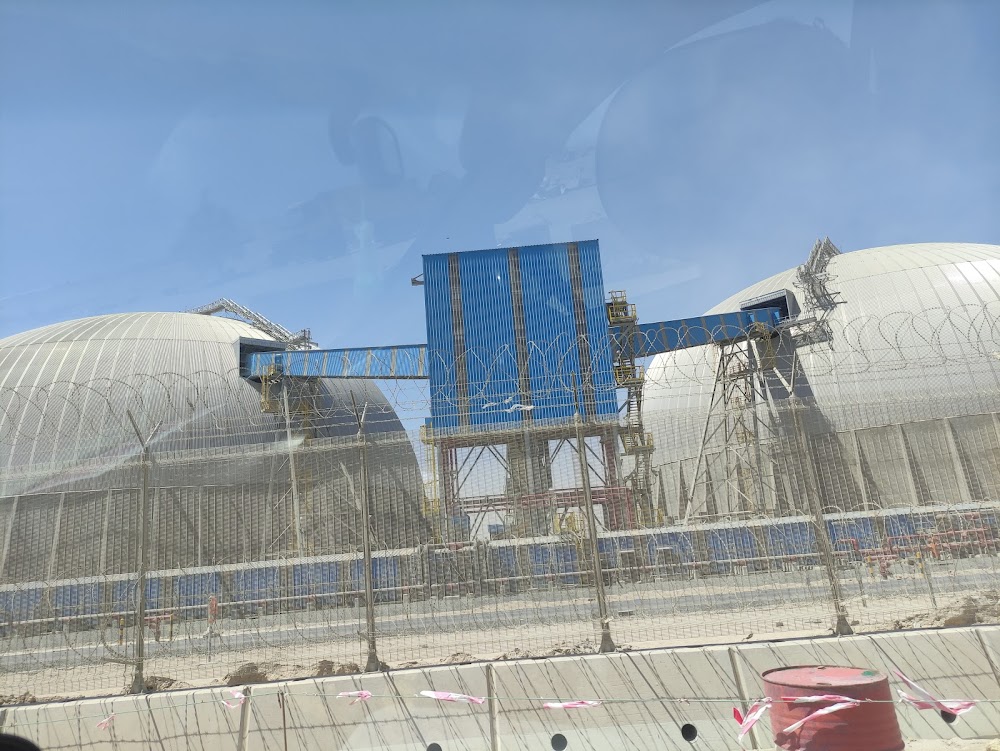Grand Mosque (المسجد الكبير)
Overview
The Grand Mosque, also known as Al-Masjid Al-Kabir, is an unmissable treasure in Kuwait's capital, Kuwait City, nestled in the vibrant district of Az Zawr. As the largest and most significant mosque in the country, it represents the spiritual and architectural magnificence of Islamic culture. For foreign tourists, this stunning edifice provides an extraordinary opportunity to delve into Kuwait’s rich traditions and contemporary devotion.
A Historical Landmark
The Grand Mosque's history traces back to the 1980s when it was carefully constructed to serve as the nation’s central place of worship. Completed in 1986, this mosque stands as a symbol of Kuwait's cultural renaissance amid rapid modernization fueled by the oil boom. Designed by local architect Mohammad Makkiya, the Grand Mosque seamlessly blends traditional Islamic design elements with modern architectural features, creating a landmark that harmoniously connects the past and present.
Architectural Marvel
Spanning an impressive 46,000 square meters, the Grand Mosque can accommodate up to 10,000 worshippers at once. Its central prayer hall, a masterpiece of artistry and engineering, is adorned with intricate Arabic calligraphy, stunning chandeliers, and geometric patterns that foster a serene and majestic atmosphere for prayer and reflection. The main dome, soaring to 26 meters, captivates visitors with its breathtaking azure blue finish and Quranic inscriptions encircling its base.
The Towering Minaret
One of the mosque's most striking attributes is its minaret, which reaches an impressive height of 74 meters. This architectural beacon not only serves the functional purpose of calling the faithful to prayer but also stands as a visible landmark throughout Kuwait City. The mosque complex features a spacious courtyard, lush gardens, and multiple smaller prayer rooms, each crafted with the same meticulous attention to detail that defines the entire structure.
A Hub of Community and Spirituality
The Grand Mosque's significance extends beyond its physical grandeur. It serves as a gathering place for individuals from diverse backgrounds, reflecting Kuwait’s unified spirit and collective devotion. During the holy month of Ramadan, the mosque comes alive with communal prayers, special religious lectures, and nightly Iftar meals where the community unites to break their fast. Throughout the year, the mosque also hosts various cultural and religious events, reinforcing its role as a central hub for spirituality and community connection.
Engaging Guided Tours
For foreign tourists, visiting the Grand Mosque is not only about admiring its architectural beauty but also about experiencing the warmth and hospitality of the Kuwaiti people. Guided tours are available in multiple languages, providing visitors with a deeper understanding of the mosque's history, design elements, and significance within Kuwaiti society. These tours often include a visit to the Imam’s office and the mosque library, which boasts an impressive collection of Islamic texts and literature.
An Educational Center
In addition to its religious and cultural importance, the Grand Mosque serves as an educational center, promoting a deeper understanding of Islamic teachings and traditions. Workshops and seminars addressing various religious, social, and intellectual topics are frequently held here, making the mosque not just a place of worship, but also a beacon of learning and knowledge.
National Significance
An intriguing aspect that captivates many tourists is the mosque’s role during significant national events. During times of celebration or remembrance, the Grand Mosque often becomes a focal point for the community, underscoring its integral position in Kuwaiti identity.
In conclusion, the Grand Mosque in Az Zawr, Kuwait, provides a profound experience that intertwines spirituality, culture, and history. Whether you visit to admire its architectural splendor, join a guided tour, or simply soak in the tranquil ambiance, the Grand Mosque is an essential addition to any travel itinerary. It stands as a testament to Kuwait’s rich heritage and modern vibrancy, welcoming all who wish to explore its sacred halls.




